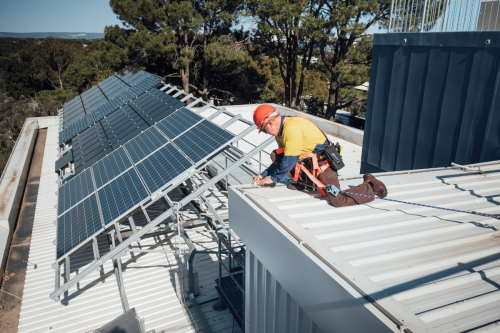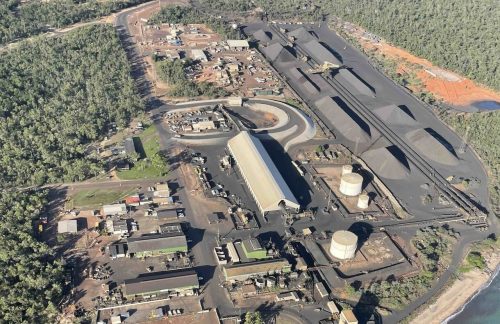As reiterated by the world’s top scientists, reducing carbon emissions is essential in preventing global warming – making net zero emission targets a necessary consideration in all individual, business and community decision making. The combination of the push to meet these targets alongside an increased focus on the country’s power supply amid soaring energy prices has made renewable energy solutions more viable than ever, both financially and environmentally.
For communities, one step that can be taken towards a decarbonised economy is the implementation of community batteries.
To support the deployment of community batteries Acacia Energy encourages governments across Australia to consider mandating the implementation of smart, tactical network tariffs. We believe that this will make a significant contribution to the transition to net zero by enabling locally generated renewable electricity to be locally stored and locally used. In addition to the local benefits, implementation of tactical network tariffs will enable investments in large-scale renewables and transmission to focus on communities and industries that cannot implement local solutions that leverage existing capacity in the low-voltage electricity networks.
To understand how tactical network tariffs have an influence over the success of implementing community batteries, it is important to understand how the electricity network operates. The networks are designed to meet a maximum capacity that only occurs for a very small number of minutes in a year, and to bring electricity from large, centralised generation sources to where the electricity is used. For a large amount of time there is capacity in the networks that is not being used, Community Batteries leverage this unused capacity in the low-voltage electricity distribution network.
At the local level, that is in the low voltage electricity network, the network is easily able to cope with the two-way flow of electricity between customers who are consuming electricity and customers whose solar PV system is generating more than they need. A two-way flow does become a problem for the distribution network, however, when the electricity needs to flow back through the sub-station and into the high -voltage network. As the sensitive assets in the sub-station are designed for one-way flow, the network must either make considerable investment in protection equipment to enable two-way flow, or simply limit the amount of electricity that can be exported back into the grid from customer assets.
When networks constrain customers from exporting solar to minimise two-way flow, the customers’ electricity generation capacity becomes stranded, resulting in high levels of wastage of renewable energy – which could have been saved and utilised during peak times.
A community battery installed in the low-voltage network can absorb the excess energy before it needs to flow back through the sub-station, thereby avoiding the need for investment in expensive protection equipment and allowing the customer electricity generation assets to operate at their full potential. There is also no need for any new poles or wires to allow this electricity flow in the low-voltage electricity network; the existing capacity is simply being put to greater use for more of the time.
Furthermore, when the local need for electricity is higher, the stored electricity in the battery can be released back into the low-voltage network to meet this need, thereby reducing the amount of electricity that would otherwise need to be transmitted from the centralised generator, through the high-voltage network and the sub-station into the low-voltage network. This provides electricity that is locally generated, locally stored, and locally used; thereby cutting down carbon emissions and taking one step closer to a decarbonised economy.
Furthermore, the network that the customers are already paying for through their network tariffs is now being used more effectively.
While community batteries are an exceptional way to reduce carbon emissions and help communities down the path of renewable change, they can take considerable investment, a consideration that must be addressed to ensure the success of community battery projects for the future.
One of the considerations that can support investment in renewable energy solutions like community batteries is the introduction of Smart Network Tariffs. As it stands, in the absence of any change to network tariffs, the community battery benefits the Network Owner by deferring the need to invest in new network assets, prolonging the life of the existing assets and reducing the costs of operating and maintaining these assets, which they already earn a regulated return on. Introducing smart, tactically designed network tariffs that incentivise community battery owners to operate batteries will ensure that the batteries achieve the potential improvement in network efficiency and encourage investment in renewable energy solutions. Furthermore, the energy user’s return on investment is increased thought the network tariff incentive.
An example of a smart, tactical network tariff is the CitiPower, Powercor and United Energy Community Battery Network Tariff. This tariff pays the owner of a community battery to recharge the battery during 10am to 3pm and to discharge the battery between 4pm and 9pm. There is also a disincentive for discharging the battery in the period from 10am to 3pm. Introduction of Smart Network Tariffs will allow customers who invest in renewable electricity solutions like solar PV systems to operate them to their full capacity without constraint and always receive the benefit of feed-in-tariffs. Customer network tariffs will also be lower because the networks are not having to invest in expensive protection equipment that would otherwise be required to allow the renewable solutions to operate unconstrained.
Addressing local needs in communities will alleviate the investment required for large scale renewable projects and transmission, and though the need for investment will not be eliminated, the investment that is made can be focused to communities and industry that are unable to meet their needs with locally generated and locally stored electricity.
Large scale uptake of community batteries across Australia will reduce the need for those communities’ electricity needs to be satisfied by the much talked about investment in large scale renewable projects and storage projects as well as reduce the need for investment in electricity transmission. Through implementing community batteries across Australia, homes can be electrified with renewable energy, a step forward in tackling both climate change and net zero targets, in way that both upholds and includes the voices of local communities.
Stephen Thomson
CEO Acacia Energy


